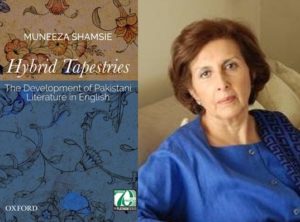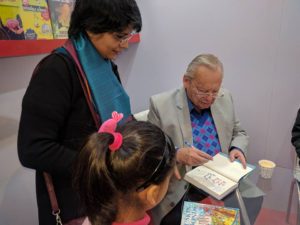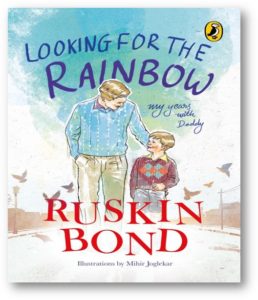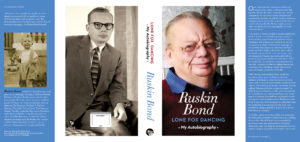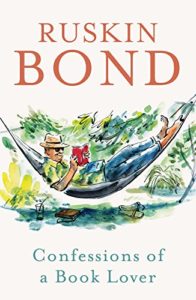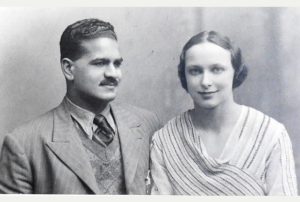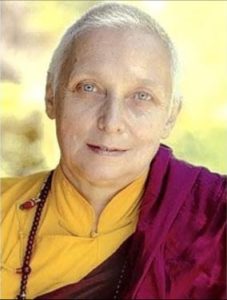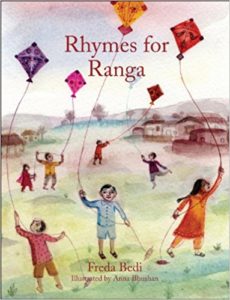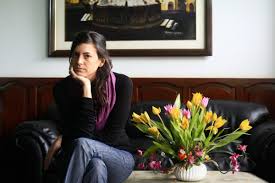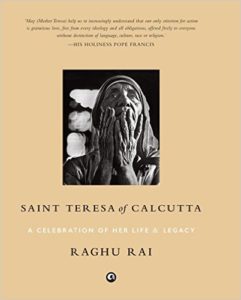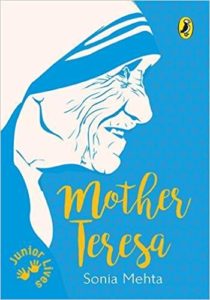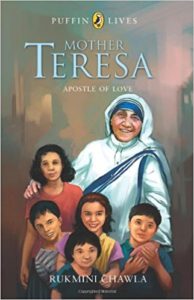My interview with debut writer, Deepak Unnikrishnan, was published in Bookwitty on 13 April 2017. The interview is reproduced below.
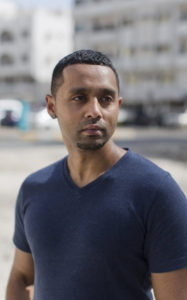
ABU DHABI, UNITED ARAB EMIRATES – May 24, 2016: ( Photo by Philip Cheung )
Deepak Unnikrishnan is a writer from Abu Dhabi and has lived in various cities in the United States. He studied and taught at the Art Institute of Chicago and at present teaches at New York University in Abu Dhabi. His extraordinary, kaleidoscopic collection of short stories, Temporary People vary in style from magic realism to the surreal, and curiously enough, to a list of jobs available to immigrant labor. There is a rich texture to the stories not just for the magical plot lines such as the one of a woman who goes around at night “fixing” the broken limbs of migrants with glue, but the strong rhythm underlying them. This is his first book, which has received wide critical acclaim and was also the inaugural winner of the Restless Books Prize for New Immigrant Writing. Unnikrishnan generously took the time to answer questions for Bookwitty here:
Why these stories?
Personally, there was a need for the tales to get out. I think the question to ask would be why these people. Why linger on them the way I do, be they man, woman or child. I suppose a part of me wanted to resurrect the city that raised me. Couldn’t do that without thinking about people. And once your mind grants refuge to the folks you’ve imagined, uncles and aunties and friends and strangers, they take over your mind. But after years of lugging them around in my head I wanted to be rid of them, and the only way I could manage that was to write them out of my system. But I knew, as I began to write this thing I began, I wanted the work to be populated by individuals from different age groups: the young, the old, and those in between. So you could say I’d pocketed these people like children pocketing marbles. When I was young I didn’t understand remembering people was my method of making them immortal. When I left the Gulf, they – such people – became my souvenirs. And I wanted them in the book. As realization hit about what I was writing about, I found myself wondering for the first time whether I was writing about my people. Or people like me, whatever “me” meant. It was one thing to claim a place, another to claim people. But it’s also the strangest thing to write about a place like the Khaleej (Arabic for Gulf) when you’re not there anymore. Abu Dhabi felt different from afar. In New York and Chicago, Abu Dhabi could only be distant. Yet because I thought of home often enough, the city I left drifted close enough for me to miss it. As well as engage with my version of what I believed the city to be.
You seem to be fascinated by the form of a story — soliloquy, interior monologue, poetry, short story, prose, etc. Is the power of a story dependent on its form?
I’m not terribly old, but I’ve been told tales, in bars, cabs, rooms, at night, twilight, past midnight. Men, women, and children have told me stories sitting in a chair, nursing a drink, minutes after a kiss. They’ve all been different, these tales. Sometimes the delivery was off; other times the tales fizzed and popped like firecrackers. I don’t remember them all, but I do recall the care these people (especially children) took with their tales, even if the world could have been breaking outside, why saying something mattered so much to them, why being listened to mattered so much to them. And they all went about reciting their pieces differently. Their tales/fables/anecdotes were wedded to their personalities. And on good days, I’d hear (and read) stories that bobbed and weaved in between forms I adored. As someone who writes, I still hesitate to tell people I write. I’m not sure what that means yet but I’ve always been fascinated by the possibilities of narrative form. I want my work to count. I’ve thought about the text. I wish to be heard. But I’m not toying with form because I want you (“you” being the reader) to know I can do this and that and juggle mandarins while I’m at it. Temporary People needed chapters that operated like players in an orchestra. Everything mattered, everything counted. And why experiment? Well, sometimes I’m bored, so I try things.
Men, women, and children have told me stories sitting in a chair, nursing a drink, minutes after a kiss
Why depict so much violence that produces a visceral reaction in one while reading it?
I ran into someone I went to high school with at a reading in New York. So I’ve read thirty pages, he said. And, he continued, I am miserable. That broke my heart a little. So you haven’t seen/found any joy yet? I wanted to ask him. You’re right, the book’s doused in violence. But conversations about the book can be steered in multiple directions depending on what kind of violence you’re interested in talking about. If it’s physical violence, graphic descriptions of beatings and punishments, by men, women and children, then sure, there’s a lot of that. But if you’ve responded to any of these moments of chaos, I’m also grinning a little, because that means I’ve taken you somewhere and left you there to think over what’s been written, especially since some of the violence pays more homage to Tom & Jerry than Tarantino. But if you’re referencing another kind of violence, this one more mental, because you’re reading about children of [temporary people] pravasis fending off people who pick on them because of what they represent, and pravasis grappling with what they’ve become, then you’re more in tune with what the book’s attempting to do, figuring out what kind of mythologies develop over time in a city populated primarily by people from elsewhere.
Which was the first story in this collection and how did the rest develop?
“Mushtibushi” is the oldest chapter in the book. I started it in 2003. I finished it in the fall of 2012 or the spring of 2013. The rest arrived in stages. “Gulf Return”, that opens the book, was written in 2013. Back in the day, when the tales began to populate notebooks and Word and Open Office documents, I was convinced I was working on a collection. But over time, I realized I was interested in architecture too, how text looked and operated on the page, how one flawed piece could piggy back on top of something whole to produce an effect neither could manage on their own. Now see, novels are allowed to fiddle with form and do all sorts of fun things. Few people blink. A collection on the other hand is rarely allowed much room to maneuver. It’s either supposed to be a bunch of disparate tales or linked stories, if I were dip into clichés. But I wanted my work to do something more. I wanted my work to question things. Not fuck genre, but camouflage it. I knew I wanted to capture the din and growl of my city but I also instinctively knew that the stories needed each other to not only breathe and communicate with one another, but to create and flesh out another animal, something I couldn’t define, but wanted to make. I can also make a case that the book is primarily about language. The people are incidental, but it’s through them that the book negotiates the city and languages that raised me.
How did you decide upon the titles?
Mostly: trial and error. You get lucky too. Some titles write themselves, like “Fone”, and “Mustibushi”. Others, like “Kloon”, took more time, since the original title, “The Clown Confessions”, was terrible. The titles were signposts, calling out to readers. Urging them to dip into the unknown. But you know, when you’ve got over a decade to work on a project, you name and rename things so often that you’ve got time to make stuff sound interesting. At least that’s what you tell yourself.
Are you fascinated by languages, rules of grammar and how far can these be explored or challenged?
In school (pre, middle and high) I struggled with English syntax. My poor teachers would pull out their Wren & Martins. Whenever they did, I’d shudder because grammar didn’t make sense. The Brits and the Yankees couldn’t agree on stuff: spellings, slang, idioms, sentence lengths. Then throw in the desi accent and watch mayhem ensue. It was a bit much, all these rules, because I didn’t speak like the BBC. Or Hollywood. Yet I’d snigger at my father who didn’t sound cool, or hide his Malayaleeness, although his command of English far outweighed mine. He’d ask me how to pronounce certain words sometimes, my [father] acchan, and I’d ask him to repeat them so I could laugh at him. We had a huge row once about the word “coup”. I kept telling him to pronounce the “p.” You don’t, he said. As if you’d know, I yelled back. But even back then, I knew language was power. English that sounded white, coming out of the tongue of a brown boy/man, confused people. But English wasn’t the only language in play. In Kerala, my cousins could’ve ripped me to shreds because my Malayalam was below par. They never did because they were kind and wanted to communicate, but my friends in Abu Dhabi made fun of my Malayalam all the time. In fact there was one dude who always made it a point to pick on my accent. And I wanted to pick on his English because mine sounded better. But we could both communicate in different tongues. That should have been enough, but it wasn’t. There was this need to highlight our superiority over certain languages, because we wanted to feel better about ourselves, because we thought we were better than other people who weren’t smart enough to sound sophisticated. And I suppose I used whatever English I knew to balance the Arabic I didn’t know, even though I learned Arabic in school for over a decade. But if there’s anything Abu Dhabi taught me, it’s that misspellings or bad grammar didn’t mean you couldn’t communicate. The menu in some cafeteria down the street may say “chiken mayonnaise”, but you knew what that was. Or when your Arabic teacher asked one of your classmates to “open the AC”, you knew what he wanted. And English, I instinctively knew, was malleable. And open to marrying other words from other worlds. “You understand, w’allah?” But language to me has always been synonymous with experimentation. The book is therefore an extension of my mind. If I were to put it simply, I don’t like being told what to do. I’m also saying don’t tell me what words ought to come out of my mouth. If you tell me something foreign must be italicized because it’s not English or English enough. I say no. Respectfully. No!
If you tell me something foreign must be italicized because it’s not English or English enough. I say no. Respectfully. No!
Your stories are like performance poetry. There is a very strong sense of rhythm. Was it from the word “go” or did you work upon it while editing the manuscript?
Rhythm’s absolutely crucial to the work. If language constitutes the book’s blood and bone, rhythm’s its spine. I wanted the reader to hear things. I wanted my words to grab hold of people. And not let go. I suppose another reason the book reads the way it does is because I’ve got characters that don’t/won’t shut up. Whether it’s Taxi Man, or little Maya. They want to be heard, these characters I made. And it’s fascinating you claiming the work channels performance poetry. You know, I remember watching Wim Wenders’ Pina, his documentary about Pina Bausch. Early on in the film, you’ve got her dancers marching to Louis Armstrong’s West End blues. And they’re miming seasons marching single file: spring, summer, autumn, winter. After they mimed winter, I remember, my favorite season, I experienced unadulterated bliss. I couldn’t believe it someone had managed to reinvent winter for me even though I assumed I knew what winter felt like. As a writer, I’m interested in stuff like that, in how readers respond to what I’ve managed to do on the page. After watching Pina, I remember thinking: I want my book to do THAT. The work should dance.
Despite being surrounded by people there is a terrible sense of loneliness in the stories. Did this emotion emanate from the stories of their own accord or was it a conscious decision on your part to tease it out?
Sure, some characters in the book address various states of loneliness. You’ve got the isolation that stems from feeling cut away from family, especially if you’re on your own in the Khaleej. There is also the fear of being misunderstood, of wanting to be seen as something worthy, something beyond skin or nationality. Then we’ve got the paranoia of children and teens, creatures of perpetual angst. But we’re also talking about individuals trying to negotiate a city like Abu Dhabi. And cities – take your pick: New York, Mumbai, Sao Paolo – can be tough. When you’re temporary, a proverbial transient, you’ve got your own language and register. And your sense of time is perpetually ten minutes or ten years ahead. But then you’ve got characters like the cabbie in “Taxi Man”. He’s fine, his world’s fine, but he’s also hyper aware of his surroundings, like everyone else who populate the book. I’d like to think the book isn’t all about loneliness. Like I stated earlier, it’s about language, and memories, people letting you into their thoughts.
Most debut writers find it very challenging to place a short story collection with publishers. Yet you not only were published but won the Restless Books Immigrant Prize as well. How did this come about?
I found my agent, the wonderful and tenacious Anna Ghosh, in the fall of 2014. She shopped the book around in the States for over a year. We came close. Some publishers wanted to know if I had a novel, something more traditional, which they’d put out first of course. Others weren’t sure how to see the book. Difficult to market was one comment. Not everyone got what I was trying to do. But mostly, the editors were kind and encouraging, but no one would commit. Then we tried India. Again, crickets. In fact, we didn’t even get close, and that upset me because I was looking for an excuse to vent. Then in October or November of 2015, Anna sent me a note about an inaugural book prize. The press was Restless Books. Submit the work, she suggested. By then I had pretty much downed several cocktails of self-pity and passive-aggressive woe-is-me soliloquies, but I trusted Anna. So I cleaned up the manuscript, included a cover letter, sent everything out. And pretended I forgot about my submission, but noted the date when the short list was going to be announced, the spring of 2016. The rest, well, you know the rest.
Who are the writers you most admire?
There are far too many to list them all. I gave a talk/reading at the Seminary Co-Op bookstore in Chicago. After committing to the event, I was asked if I could provide a critical reading list that could inform readers about my various influences. Making that list took me well over an hour. There are names on there that will be familiar: J. Coetzee, Nadine Gordimer, Arundhati Roy, Primo Levi, Salman Rushdie, George Saunders. But there are also other names that may be less familiar to some readers (even though they shouldn’t be): A. Sivananthan, Daniil Kharms, Ryunosuke Akutagawa, Beth Nugent, Kuzhali Manickavel. There are poets and non-fiction writers on that list too, like Inger Christensen and Marco D’eramo. Then there are works and artists who blend genres, artists/writers like Chris Ware, and books like The Photographer (by Didier Lefevre, Emmanuel Guibert and Frederic Lemercier). But some names, like Charlie Kaufman, or the filmmaker Krzysztof Kieslowski (his Dekalog was extremely instrumental in how I saw architecture in stories), didn’t appear. Much music, by Gil Scott Heron, Nina Simone, or bands like The Verve, didn’t appear either. And they matter too to my practice, even though you were mainly asking about writers. But since you asked about writers, let me end with writers. I remember being floored after reading Dorthe Nors’s “The Heron” in The New Yorker. I read it on the train. Probably mouthed, Man that was dope. I also experienced a similar sense of respect and admiration after reading and hearing the writer Jonas Hassen Khemiri. He’s dope too.
8 May 2017


